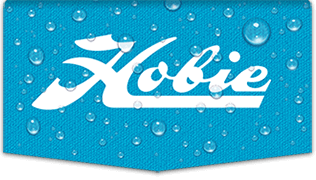There are different types of fiberglass mat/cloth, and different materials altogether, but I haven't heard of reinforcing fiberglass. To be honest, the fiberglass alone is plenty strong enough for what it needs to do. Reinforced fiberglass also wouldn't likely hold up against abrasion any better than fiberglass alone. If you really want to protect the bottom of your hull, you're better off buying cat trax.
Also, in order to make a proper repair, you'd want to use both chopped strand mat (CSM) and fiberglass cloth/weave, alternating layers, always starting and finishing with CSM - that's how a typical fiberglass hull is built, the reason being that the CSM acts as a "filler" between layers of cloth, but the cloth adds most longitudinal strength. You also would want to alternate directions with the cloth so the strands don't all line up in exactly the same direction. Also, the polyester resin shrinks as it cures (and ages), meaning that over time, you'll start to see the pattern of the fiberglass cloth through the gelcoat if it's not covered with CSM. However, seeing as your hull probably only needs a thin amount of fiberglass replaced (if any), that would be largely impractical. Most sailors just put a thin strip of tape (or two) in the areas that it's needed, sand it smooth/to shape and then cover it with gelcoat.
Before you go to the trouble of getting fiberglass & polyester resin, cut out the template for the bottom of your hull (use either wood or cardboard) and check it. If you need more fiberglass, there will be a visible flat spot, with a noticeable gap between the template and the bottom of the hull. If you don't have a gap, or only have a gap of 1/16 of an inch or less, skip the fiberglass. Just sand the bottoms with some ~120 grit sand paper to give them a profile, clean them off with acetone and apply gelcoat.
Template:
http://static.hobiecat.com/digital_asse ... mplate.jpg(Also note - if the hulls are very faded and chalky, try buying a low speed buffer and some 3M marine rubbing compound and buffing them back into shape at ~1500-2500 rpm. You can make the hulls look as good as new, no paint required! And it'll give you better results. Paint will chip and peel, and the only solution is to paint it again. Gelcoat only needs to be buffed or waxed to restore the color and the luster!)







